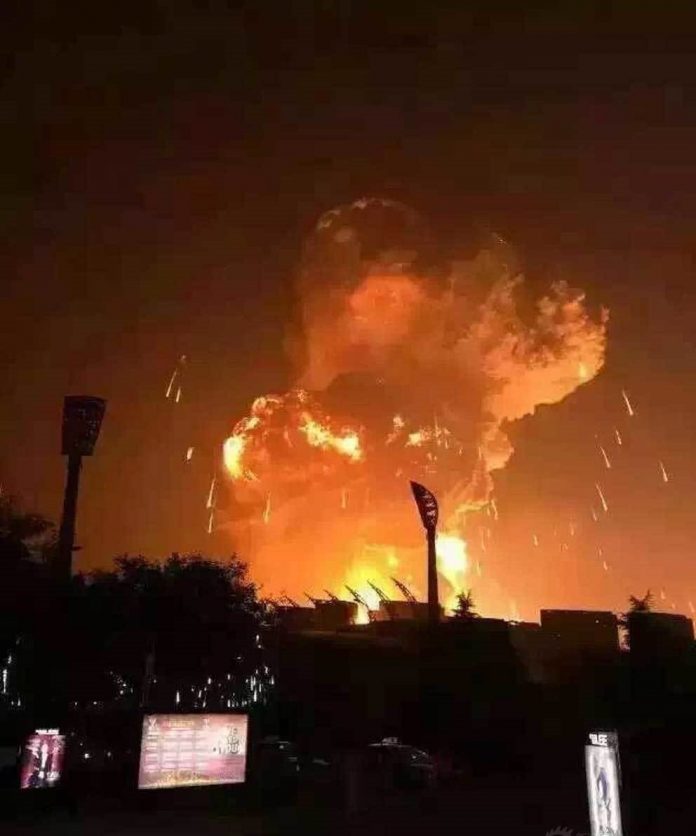With ocean shipping responsible for 90% of global trade, and an estimated 200 million containers being shipped each year, global maritime is reliant on 24/7 operation for site vehicles and machinery. However, with this continuous operation, there are increased fire safety risks at ports across the globe.
Holger Pfriem, business manager – Asia and Australasia, , assesses current and evolving marine fire risks, particularly as the industry changes to take advantage of automation and electrification, and explains how port operators can act to minimise these risks.
A wake-up call for regulation changes has been brought about by recent – and frequent – port fires. The standard health and safety obligations (HSW Act (1974) and Management of Health and Safety at Work Regulations (1999)) are the main pieces of legislation that apply. However, with the pace of change in the industry and its inherent risks, it’s becoming increasingly harder to interpret and translate these standards at ports.
To fill the gaps, the HSE’s Approved Code of Practice, ‘Safety in Docks’ was introduced in 2014 to support those in the industry who have a duty to comply with the relevant regulations found in the HSW Act. Whilst this publication has been developed by HSE and port authorities, it only addresses a few issues associated with health and safety at ports and docks. Similarly, the Department of Transport’s Port Marine Safety Code (2016) is an optional standard for port operators, and although this offers a pragmatic approach to ensuring port marine safety, it’s a UK national standard.
A more standard, globalised approach – which addresses the port industry’s evolving risks – to regulate fire safety at ports and docks would give greater clarity and a well-defined legal responsibility to apply industry-specific legislation.
Evolving risks
The ports industry is seeing a shift from manual operations to machine-led processes involving the global automation and electrification of vehicles. This is optimising efficiency and productivity; however, it’s also influencing the industry’s fire risks.
- Automation
The port industry’s adoption of automated vehicles was accelerated by the pandemic, as it enabled operations to continue, with workers staying a safe distance from each other. It also allowed ports to operate more cost-effectively.
However, with fewer people close to operating vehicles on site at any given time, it’s becoming more complex to detect fire risks. For example, where manual fire detection systems work alongside automated vehicles, there can be a delay in suppression agents being released, as they depend on the vehicle communicating with the operator and the operator reacting and administering the suppression agent to remove the risk.
- Electrification
A current development in ports worldwide is the use of electricity as a sustainable fuel source. However, this is not only impacting onsite machinery and vehicles, but also the amount of lithium-ion (li-ion) batteries being transported through ports.
This development also creates new and unique fire risks as the li-ion batteries supporting the transition to electric ‘fuel’ are at risk of a process called ‘thermal runaway’. This is where a fault in the battery’s cells – caused by overcharging, overheating, overvoltage or physical damage – produces rapid temperature increases, which can lead to toxic gas emissions, potential explosions and fire. Recent fires across the industry are examples of the real risks posed by electrification for ports.
How can port operators strengthen safety?
As port risks continue to develop, port operators can strengthen safety firstly by conducting regular reviews of risk assessments across their site. This will involve paying attention to the associated risks of any new machinery, vehicles and processes introduced on the site, alongside any evolving risks due to delays in materials handling, for example.
For automation and electrification, there are some other measures to consider to minimise operational downtime in the event of a fire and maximise safety:
- For protecting against electric fire risk – for electric vehicles or stored batteries – it’s crucial to check the system you choose is specifically designed to detect thermal runaway at the earliest possible stage and initiate spot cooling to quickly minimise risk.
- For protecting new, automated vehicles against fire risk – automatic detection and suppression is very important, as it ensures any fire risk is quickly and safely controlled, before it has chance to take hold. To decrease false system activation, it’s also important to check the system you choose is suitable for the vehicle or machinery it’s protecting.
A comprehensive approach to fire safety at ports
You should consider your site as a whole to ensure effective fire safety. For example, your site’s fire suppression solution should also address older risks associated with the protection of traditional combustion vehicles as well as new, evolving risks.
Your site’s fire detection and suppression solution is only the first step in ensuring a safe site. You also need to train key personnel in its safe use to ensure your solution is effective in emergency situations, and that your team knows how to act in the case of a fire. This will ensure their safety and the safety of your site as a whole.
Author of the article: Holger Pfriem, business manager – Asia and Australasia, Dafo Vehicle Fire Protection

Holger Pfriem is the business manager for Asia and Australasia at Dafo Vehicle Fire Protection and CEO for Dafo Asia.
He has worked at Dafo since 2004 and is working to save lives and livelihoods with fire protection solutions.







